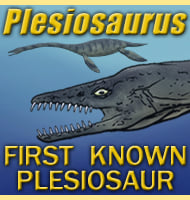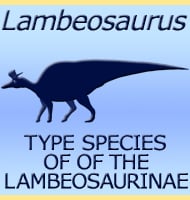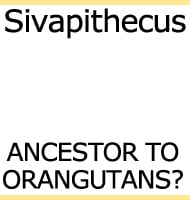In Depth
The most well-known of the ichthyosaurs, Ichthyosaurus itself is almost always included in books about dinosaurs and other prehistoric creatures. While it may look superficially like a prehistoric dolphin, Ichthyosaurus wasn’t even closely related, in fact Ichthyosaurus wasn’t even a mammal like a dolphin is, it was a reptile. Also, Ichthyosaurus was not in the same group of reptiles as the dinosaurs, although it did live at the same time as many of them.
With its distant ancestors being terrestrial reptiles going back to an aquatic lifestyle, Ichthyosaurus ended up with an extremely different morphology to other land living reptiles. This ‘fish’ appearance is a result of the fact that the basic fish morphology is the most streamlined and efficient form for submerged locomotion. It also means that Ichthyosaurus was never able to return to the land, instead leading an entirely pelagic life in the oceans.
As an ocean going hunter, the main diet of Ichthyosaurus would have been primarily if not exclusively piscivorous. Study of coprolites has confirmed the presence of both fish and squid in its feeding habits. Although Ichthyosaurus appears to have relied upon its sight for feeding, the solid bone structure of the ear drums suggests that they could have ‘heard’ their prey from a distance by their vibrations in the water.
Some specimens have shown smaller Ichthyosaurus remains inside larger ones in positions that appear to be within a uterus of a parent animal and some even appear to have been in the process of being born. This means that Ichthyosaurus almost certainly did not lay eggs, but was instead viviparous, giving birth to live young. As with other viviparous air breathing marine organisms, the young emerged from the mother tail first so that they did not drown while being born.
Further Reading
– Additional notices on the fossil genera Ichthyosaurus and Plesiosaurus – Transactions of the Geological Society of London, Series 2 1:103-123 – W. D. Conybeare – 1822. – A large skull of Ichthyosaurus (Reptilia: Ichthyosauria) from the Lower Sinemurian (Lower Jurassic) of Frick (NW Switzerland) – Swiss Journal of Geosciences 101: 617-627 – M. W. Maisch, A. G. Reisdorf , R. Schlatter & A. Wetzel – 2008. – An Ichthyosaurus (Reptilia, Ichthyosauria) with gastric contents from Charmouth, England: First report of the genus from the Pliensbachian – Paludicola 8 (1): 22–36 – Dean R. Lomax – 2010. – A new specimen of Ichthyosaurus communis from Dorset, UK, and its bearing on the stratigraphical range of the species – Proceedings of the Geologists’ Association 123:146-154 – S. P. Bennett, P. M. Barrett, M. E. Collinson, S. Moore-Fay, P. G. Davis & C. P. Palmer – 2012. – A new species of Ichthyosaurusfrom the Lower Jurassic of West Dorset, England, U.K. – Journal of Vertebrate Paleontology: e903260. – Dean R. Lomax & Judy A. Massare – 2015. – Two new species of Ichthyosaurus from the lowermost Jurassic (Hettangian) of Somerset, England. – Papers in Palaeontology. – Dean R. Lomax & Judy A. Massare – 2016. – On the largest Ichthyosaurus: A new specimen of Ichthyosaurus somersetensis containing an embryo. – Acta Palaeontologica Polonica. – D. R. Lomax & S. Sachs – 2017.











